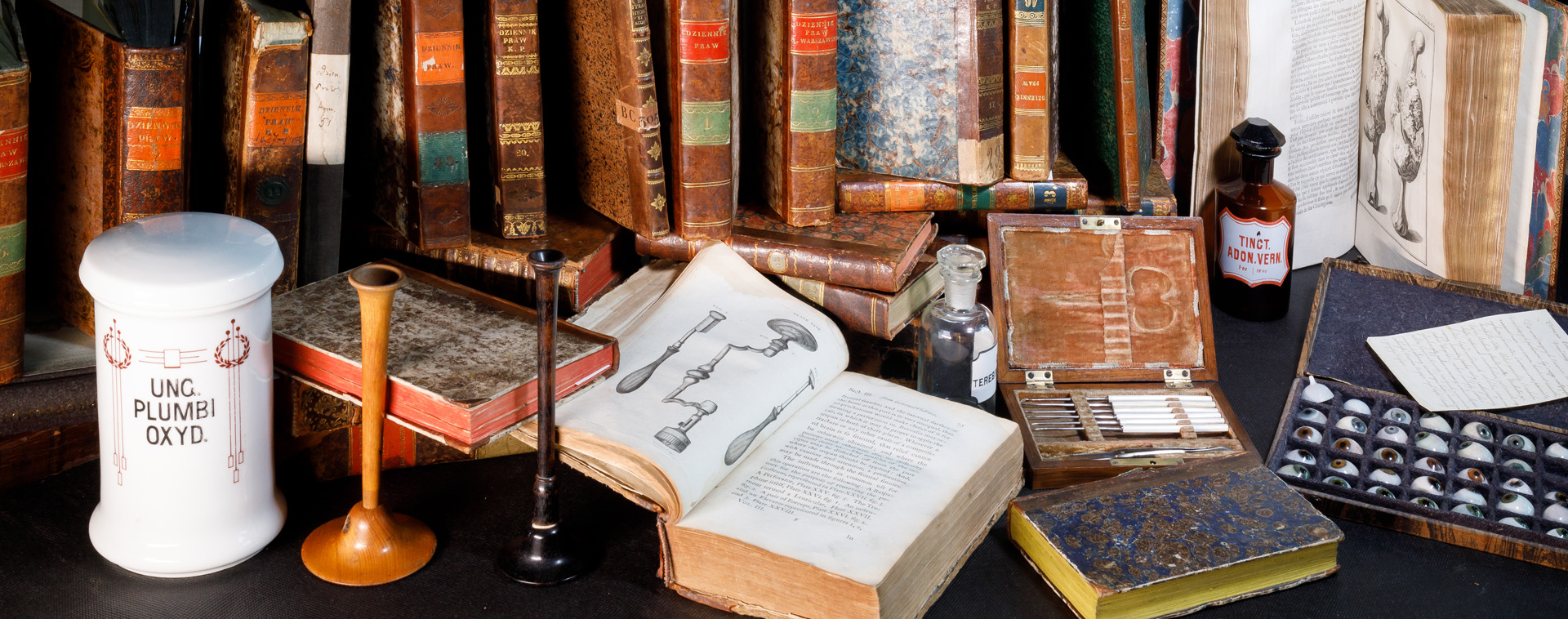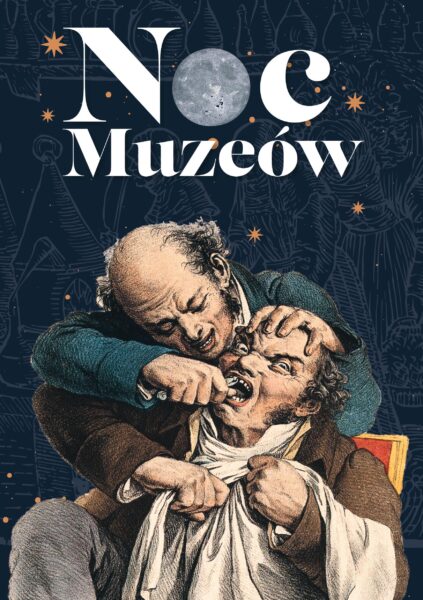Nicholas Copernicus 1473-1543
Ladies and Gentlemen,
We invite you to see our exhibition in the reading room of the Main Library of WUM, where we present the figure of Nicolaus Copernicus as a doctor.
Nicolaus Copernicus lived in an era at the turn of the Middle Ages and the Renaissance, a period of great changes and discoveries, a revival of the humanistic ideals of antiquity and a belief in the power of human reason. At the same time, there were still very close links between astronomy, astrology and medicine. It was believed that celestial bodies, and in particular the location and motion of stars and planets, had a direct impact on human health.
Nicolaus Copernicus went down in history mainly as an astronomer and creator of the heliocentric system, but being a versatile man of the Renaissance he also dealt with mathematics, physics, economics and philosophy. He was a doctor of law and a statesman. His area of interest was geography, especially cartography, he built dams and aqueducts. He was finally a doctor who practiced medicine for over 40 years.
After studying in Cracow (1491-1495) and after completing his law studies in Bologna (1495-1500), in 1501 Nicolaus began his medical studies at the University of Padua, famous for its high level of teaching, anatomical theatre and excellent professors, lecturers of both theoretical and practical medicine. As a model of the Renaissance, many of these professors-doctors were humanists, philosophers, astronomers and astrology.
The studies were four-degree. The first and second degrees were devoted to the study and interpretation of the works of Avicenna, Galen and Hippocrates, the third to practical medicine, and the fourth to surgery. The duration of the studies lasted at least three years, and in addition it was necessary to complete a year of practice under the supervision of an outstanding doctor. After two years a bachelor’s degree was obtained, after three years a bachelor’s degree, which authorized the practice of medicine.
Copernicus completed three years of studies supplemented by practical experience, which enabled him to obtain a bachelor’s degree and authorized him to practice medicine.
In 1503 Nicolaus Copernicus returned to Warmia and became the doctor of other Warmia bishops. He also treated outside the borders of the Diocese of Warmia, visiting the sick in Gdansk and Königsberg. In his medical activity, Copernicus established scientific contacts with prominent doctors of the Renaissance, establishing with them the diagnosis of more difficult cases of disease. Familiar with hygiene and epidemiology in Padua, he helped during the outbreak of infectious disease on the coast and in Warmia.
He deepened his medical knowledge by reading many works in the field of medicine. His collection included works by dozens of authors, both ancient medical authorities and contemporary textbooks on internal diseases, surgery and anatomy, as well as practical medicine. In some of the found medical works, which were the property of Copernicus, his handwritten notes related to medical practice and prescriptions are preserved in the margins. In the margin of one of them, he wrote, “Remember that, doctor! It is true Avicenna’s saying that the ignorant leads to murder, and therefore his saying should be remembered by every prudent physician.”
The doctor’s duties included not only writing the right prescription, but also preparing the medicine himself and delivering it to the patient. Copernicus’ prescriptions were no different from other prescriptions of doctors in Europe at that time. Nicholas used ingredients derived from folk medicine and recommended by Dioscurides, Avicenna and other masters of medical therapy. However, he avoided the then popular remedies not associated with medicine today, such as urine, frogs, snake bats, animal claws or poisonous substances. Nicholas tried to keep rationality and prudence, believing that short recipes are best.
Copernicus as a physician did not make any breakthrough in medicine, although he was one of the most prominent physicians – practitioners of the Renaissance era. For us, he is above all a brilliant astronomer, whose manuscript of On the Rotations of the Celestial Spheres was inscribed on the UNESCO World Memory List in 1999. For his contemporaries, Copernicus was above all a doctor, as evidenced by his portraits from the era with the lily of the valley in his hand – a medieval symbol of medical art.

